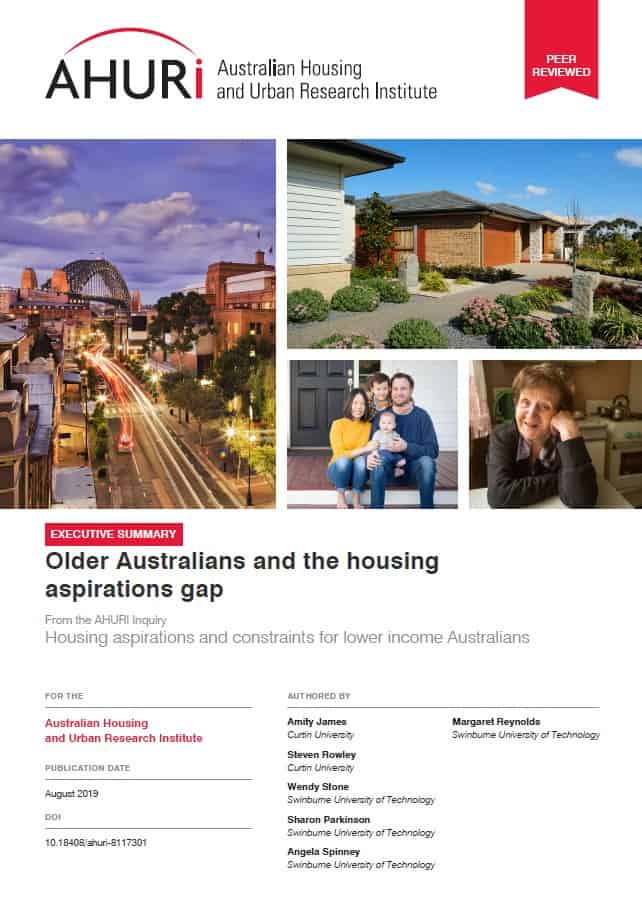Older Australians do not wish to be in the private rental market with 80 per cent demanding ownership.
- Aspirations are driven by a desire for long-term, stable housing. While the number of bedrooms, building quality and dwelling type are important, safety and security and having somewhere that feels like home are critical for older Australians.
- The short and longer-term housing aspirations gap (the difference between current and ideal housing) for later life Australians is not large with over 90 per cent of the 2,400 older Australians responding to the AHA survey stating their current housing meets their short-term housing aspirations, while 70 per cent reported current housing meets longer-term aspirations. There is unmet demand, or a housing aspiration gap, for dwellings in small regional towns, separate houses, two and three-bedroom dwellings and home ownership. The housing aspirations gap is larger for renters, private and social, than for homeowners.
The housing aspirations of older Australians are shaped by both their shelter and non-shelter priorities. Home ownership, underpinned by a need for long-term, stable housing is a priority for this cohort. This was particularly the case for Indigenous Australian grandmothers given their critical role in keeping families together and providing care to grandchildren.
The physical safety of a dwelling and control over the space in which they live are important and is associated with the desire to remain independent within their home and age-in-place. Continued employment and the needs of dependent children are important for a small number of older Australians in the 55–64 age category. Important shelter aspects relate to the number of bedrooms, dwelling type, quality and security but older Australians are often willing to compromise on the physical aspects. While large back gardens are less important to older Australians, some outdoor space was considered important for those of all ages and tenures. Aspects of location which influence aspirations include the perception of safety, social connections within the community, walkability, quality public transport, access to services and amenities and proximity to family and friends








